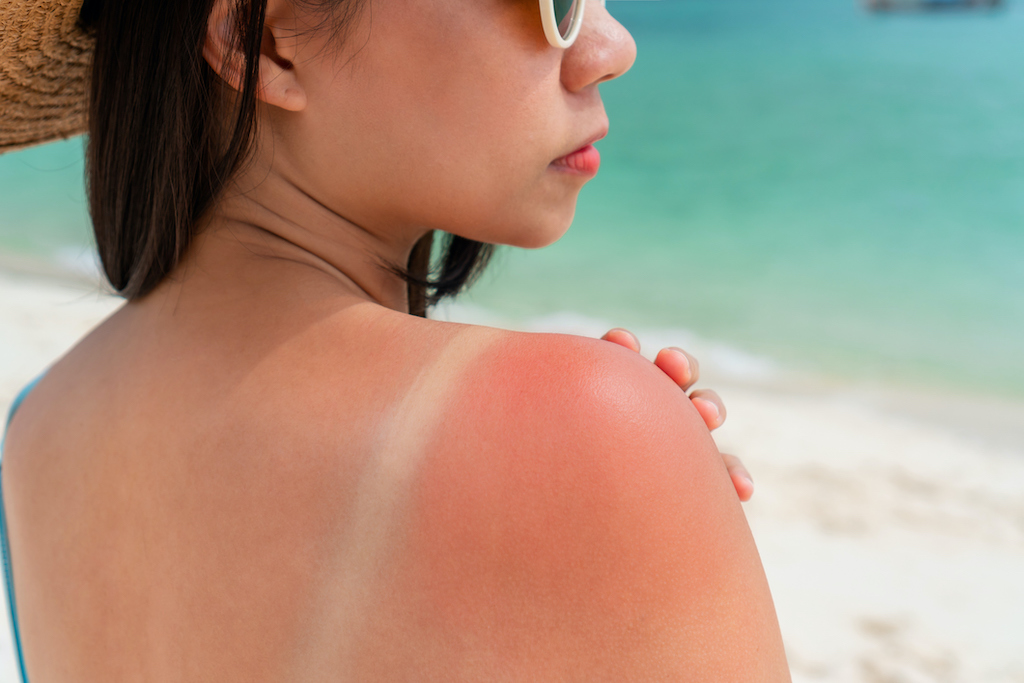How often should you perform a skin check? Should you be seeking a medical professional to help? As a general rule of thumb, we recommend checking your skin every three to four months.
But that changes based on your level of risk.
Not sure if you’re at risk or not? Take this quiz, adding up the points for each of your answers, to find out.
1. What’s your skin type?
Certain types of skin, hair, and eye colour can indicate how well your body filters out dangerous UV light. Using the Fitzpatrick skin type classification can help determine your risk of cancer. Find out your type here or pick based on the brief descriptions below.
Type I: Very pale, green or blue eyes, red or blonde hair = 8 points
Type II: White skin, blue or light brown eyes, blonde = 5 points
Type III: Fair skin, brown eyes, brown hair = 3 points
Type IV: Light brown skin, dark eyes, dark hair = 2 points
Type IV: Brown skin, dark eyes, dark hair = 1 point
Type V: Dark or black skin, dark eyes, dark hair = 0 points
2. How many ‘typical’ and ‘atypical’ moles and spots do you have?
he number of ‘typical’ and ‘atypical’ moles you have also indicates your skin cancer risk.
To learn the difference, mark your moles against the ABCDE’s of Melanoma.
Number of ‘typical’ moles you have:
Over 100 = 40 points
60-100 = 20 points
40-60 = 8 points
16-40 = 5 points
15 or less = 0 points
Number of ‘atypical’ moles you have:
5 or more = 25 points
3. What’s your family history?
Around 10% of all people with melanoma have a family history of the disease.
If you have a family history with skin cancer add 10 points to your total.
4. What’s your personal medical history?
Your personal medical history can increase your chances of developing skin cancer down the track. If any of the following apply to you, add the corresponding points to your total. ·
Melanoma survivor = 50 points
History with keratinocyte (non-melanoma) skin cancers = 8 points
Compromised immune system = 30 points
Organ transplant = 8 points
5. How old are you?
Skin cancer can catch you at any age, but the risk of developing melanoma increases as you get older.
Younger than 18 = 0 points
18-39 = 2 points
40-49 = 5 points
50-59 = 6 points
Older than 60 = 8 points
6. Do you have a history of bad sunburns?
Even people who have never had a sunburn can get skin cancer but it’s much more common in those who have.
Never had a serious sunburn = 0 points
Have had five or more sunburns = 8 points
Gets sunburnt approximately once every two years = 7 points
7. What are your working conditions?
Working outdoors puts you in constant exposure of the sun’s harmful UV rays. As a result, outdoor workers have almost double the skin cancer risk of indoor workers.
Indoor worker = 0 points
Outdoor worker = 8 points
8. Do you tan?
Whether you’re getting your tan from inside or outside, the damage is just as bad.
Never tanned, outside or indoors = 0 points
Tanned often as a young teenager or child = 4 points
Engaged in 10 or more tanning ‘sessions’ = 4 points
Your risk level: point totals
Very low: 0-8
Low: 9-20
Moderate: 21-35
High: 36-45
Very High: 46+
At any risk level, skin checks and sun safety are always important.
But if you’re at a moderate to very high level of risk you will want to make sure you are extra careful in the sun and when you check your skin.
If you’re in a high-risk category we recommend a yearly professional skin check on top of your usual skin checks.
*Disclaimer: This quiz is designed to be a rough estimate of the level of risk you could be at based on current research. Your actual level of risk could differ, and this test is in no way comprehensive of every factor which contributes to skin cancer.




